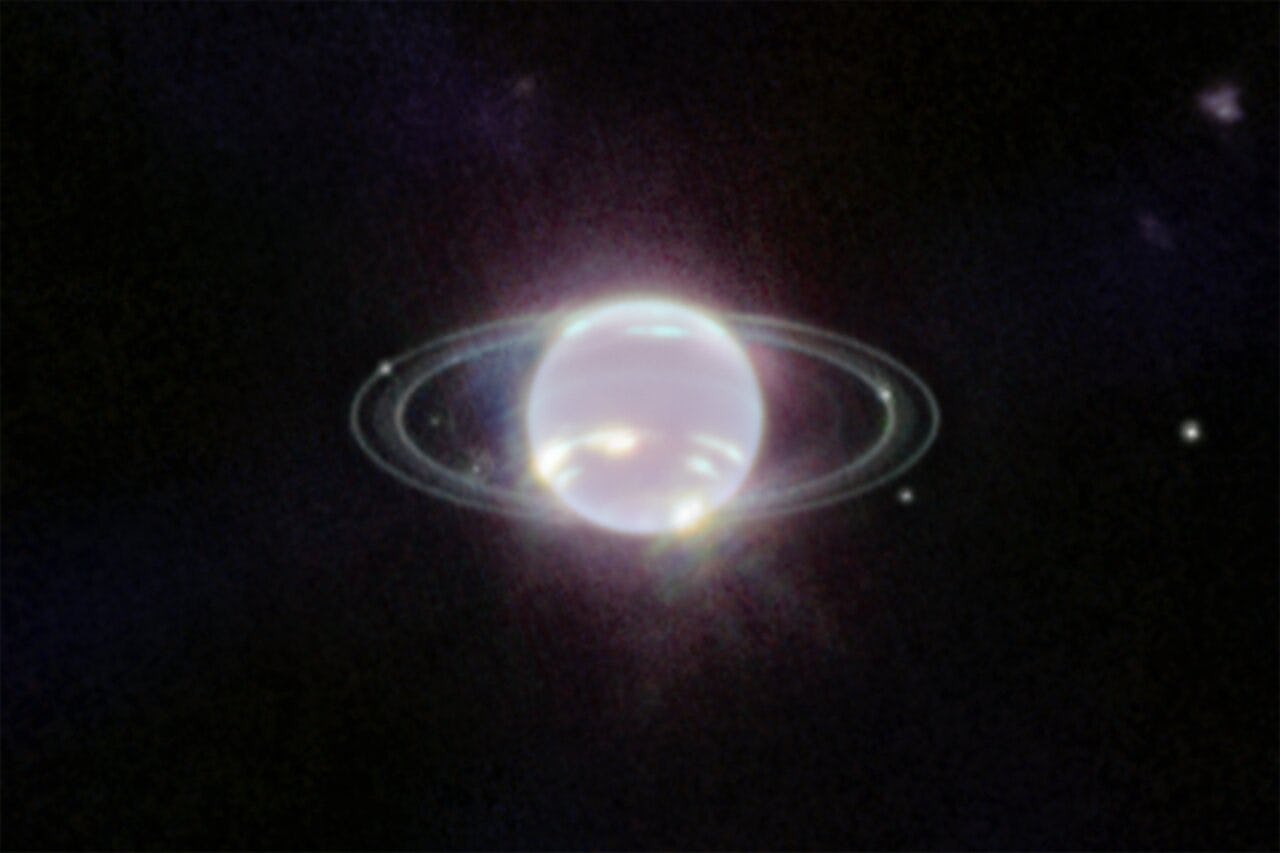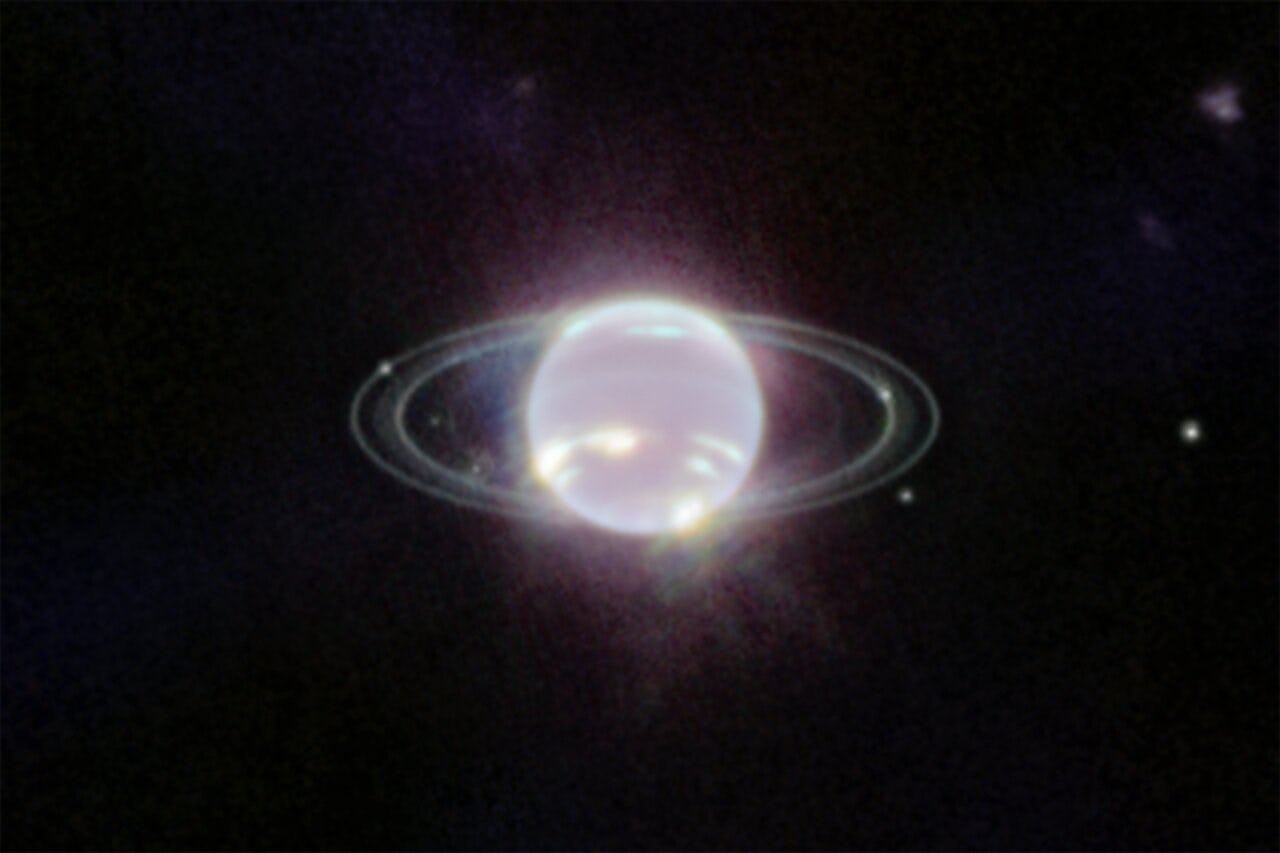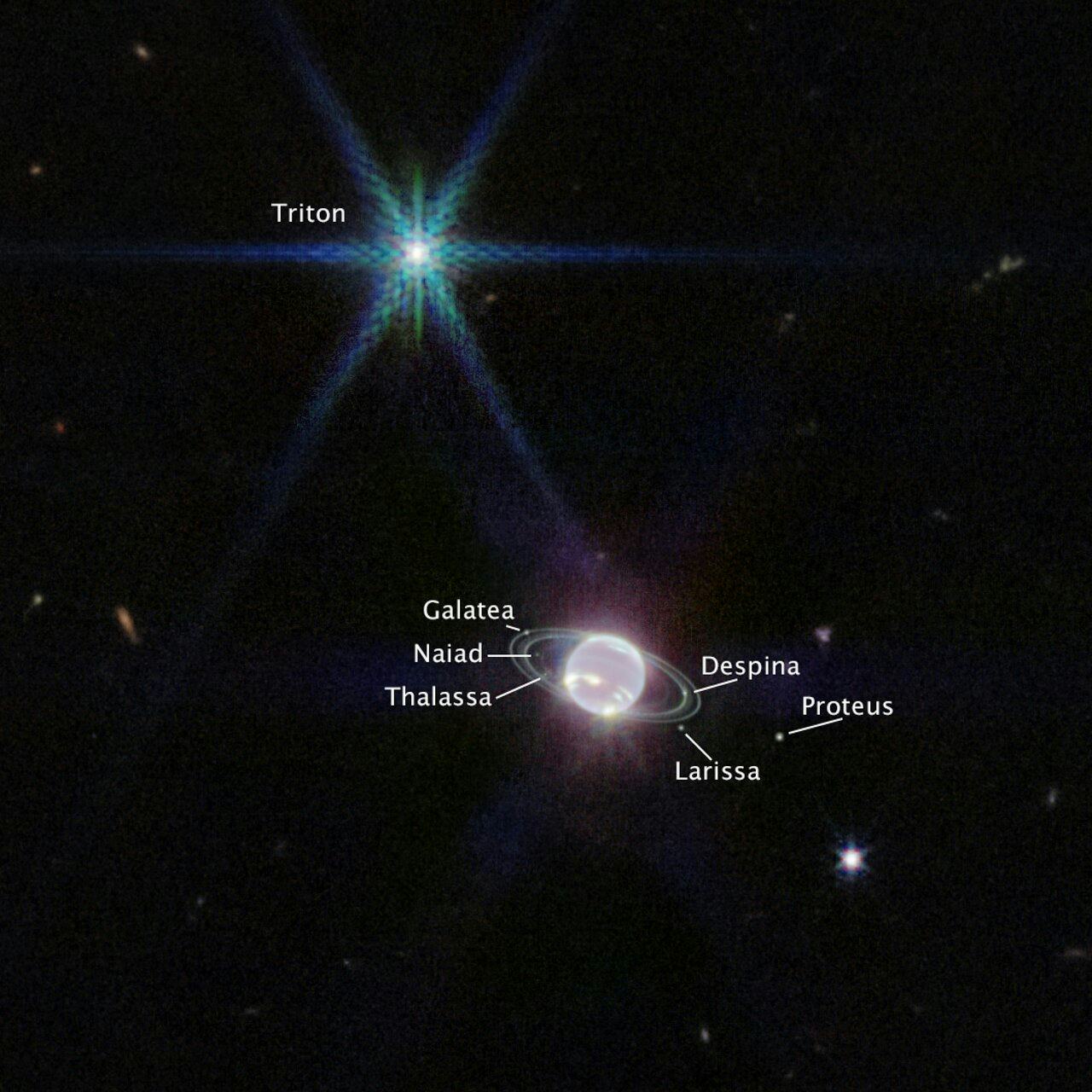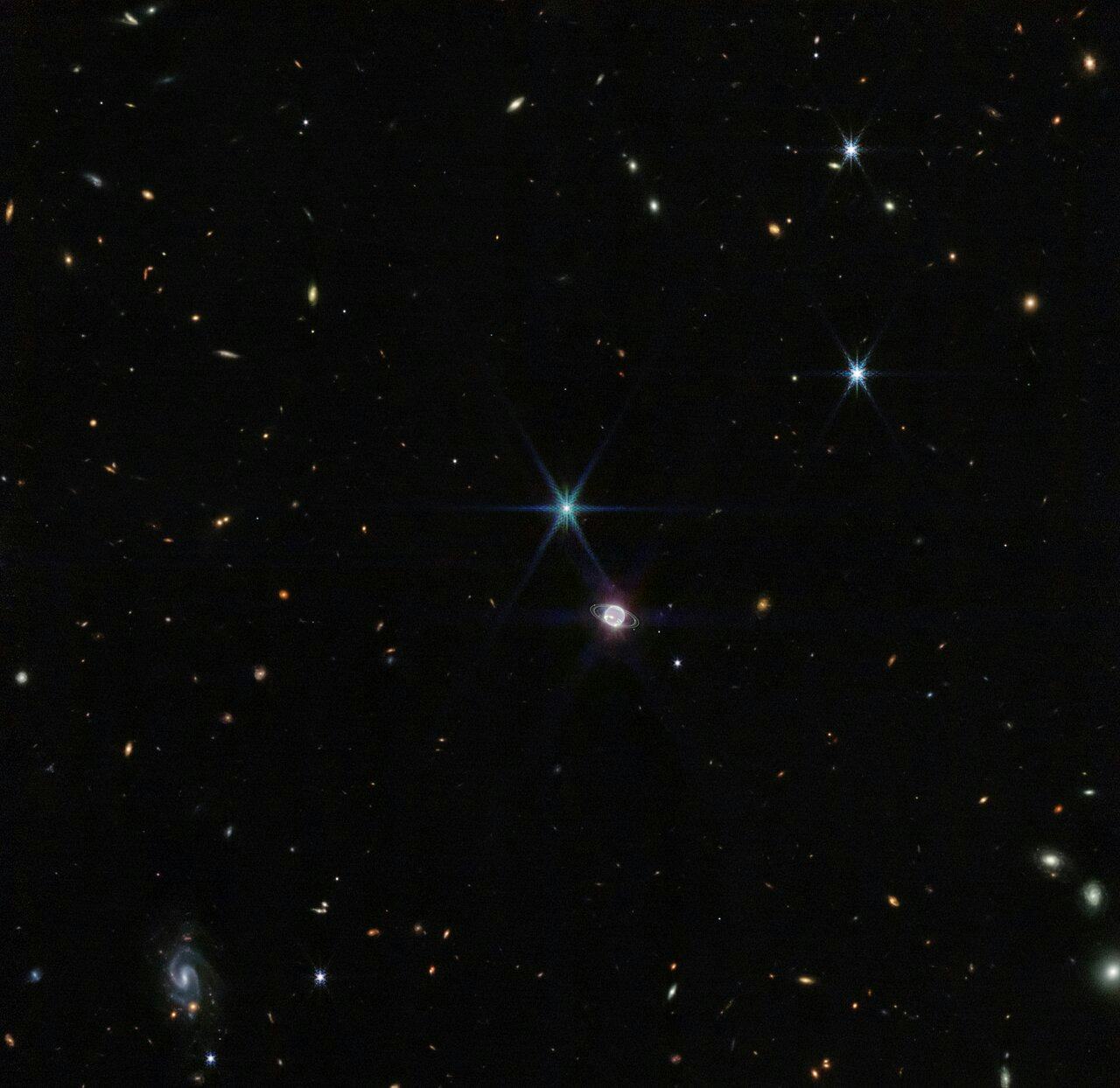
We’re used to seeing Neptune in shades of deep blue, but in the newest images from the James Webb Space Telescope, the ice giant glows with silvery light, surrounded by pale gossamer rings and faint bands of dust.
No spacecraft has visited Neptune since Voyager 2 swooped past in 1989 on its way out of the Solar System, but from a vantage point 4.4 billion kilometers away, Webb is showing us Neptune in a whole new light — near-infrared, specifically. And that’s why Neptune looks so different from its usual azure self in the latest Webb images.
In the wavelengths of light our eyes can see, the methane gas in Neptune’s atmosphere looks blue. But in the infrared wavelengths, methane gas absorbs so much light that it looks dark gray (or the infrared equivalent of dark gray; Webb’s image processing team translated infrared wavelengths into visible colors to produces these images). But the particles of frozen methane ice in Neptune’s highest clouds, however, reflect most of the sunlight that hits them, so they show up dazzlingly bright to Webb’s instruments.

Those high-altitude clouds could help planetary scientists figure out more details about Neptune’s stormy, windy weather. A faint, thin line of brightness around the ice giant’s equator, for example, could be a telltale sign of the global circulation pattern that drives the planet’s weather. As gases in Neptune’s atmosphere flow toward the equator, they get warmer — which makes them show up brighter in infrared images.

Neptune has rings, although they’re so faint that astronomers often don’t see them. Their particles of dust-covered ice may be all that’s left of an ancient moon, which orbited so close to Neptune that the tidal pull of the planet’s gravity ripped it apart. Webb’s first image of Neptune reveals a few rings that astronomers have never seen before — and an updated look at others that haven’t been photographed since Voyager 2’s flyby.
Webb also captured seven of Neptune’s 14 moons in its images, including the largest and strangest: Triton. It orbits Neptune backward, possibly because it was once a dwarf planet like Pluto and Sedna that got caught up in Neptune’s gravity and pulled into what astronomers call a retrograde orbit. Triton blazes bright in Webb’s images, with huge diffraction spikes as if it were a nearby star rather than a moon; that’s because its surface veneer of nitrogen ice reflects most of the sunlight that hits it, making Triton look even brighter than the planet that holds it hostage.

Over the next several months, Webb will observe Neptune and its moons in more detail, which may shed even more light on the system’s eventful history.







